Perfume and Cologne and Other Scents
Bacchus After-Shave
Very strange 1969 ad campaign for Bacchus after-shave. The premise is that instead of leaving a giant horse outside of Troy, the Greeks actually left a "towering bottle of Bacchus," and that this caused the Trojan women to become so wild with lust that the Trojan men no longer had time for fighting.It then follows this up with the tagline: "The Romans conquered an empire with it. Go out and conquer yours."
But what do the Romans have to do with the Trojan horse? Rome didn't even exist at the time of the Trojan war. I guess there's a vague connection because the Romans believed they were descended from the Trojans, but even so the history seems hopelessly muddled.
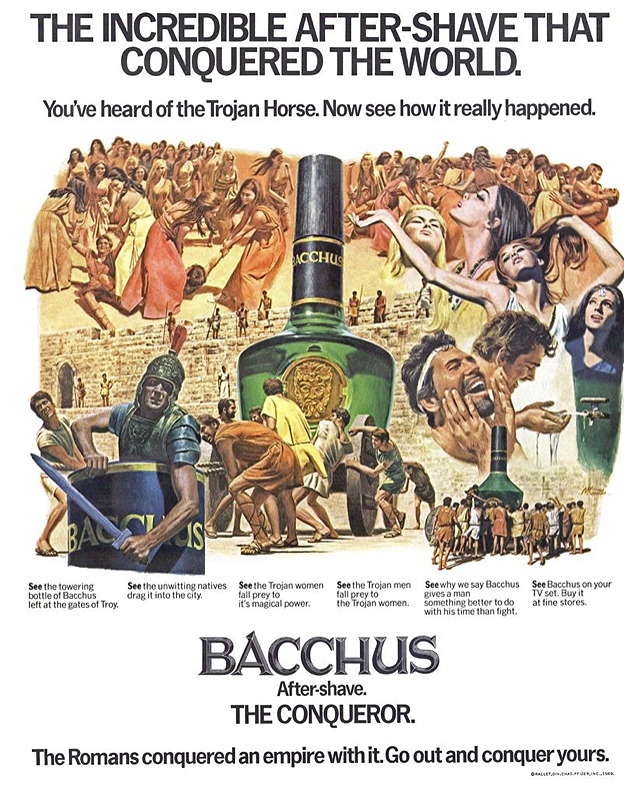
Esquire - Jan 1970
Posted By: Alex - Sun Sep 16, 2018 -
Comments (4)
Category: History, Advertising, 1960s, Perfume and Cologne and Other Scents
Donut Cologne
Invented in 1996 by three California firefighters turned entrepreneurs. Their explanation of how they got the idea:More info: LA Times - May 3, 1996
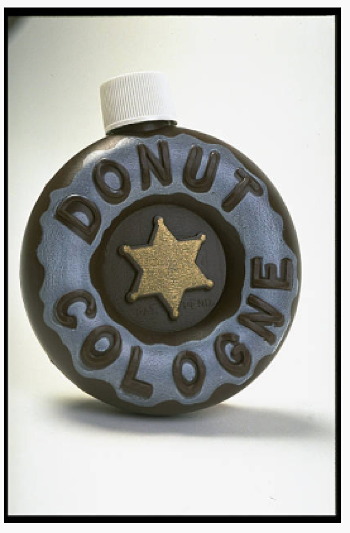
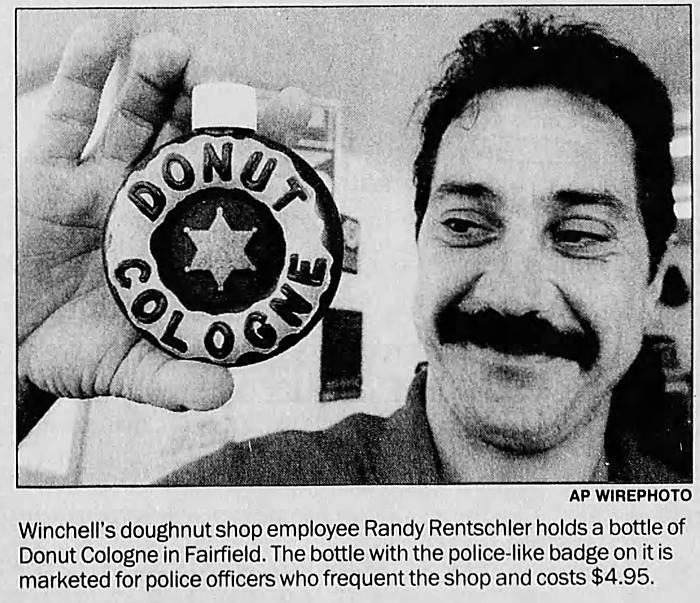
San Bernardino County Sun - Aug 7, 1996
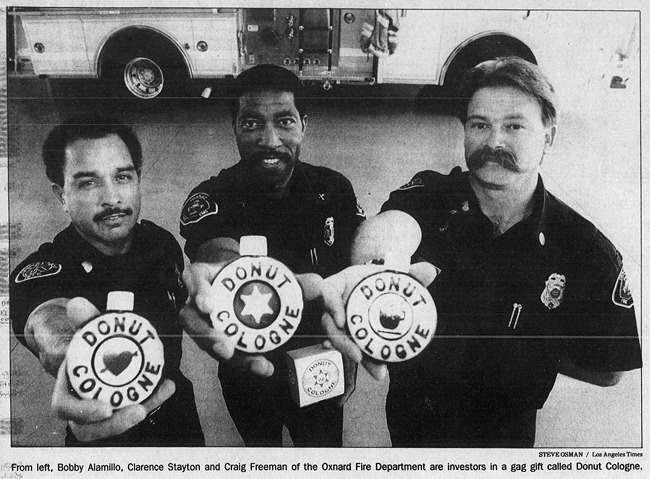
Los Angeles Times - May 3, 1996
Posted By: Alex - Thu Jul 12, 2018 -
Comments (2)
Category: 1990s, Perfume and Cologne and Other Scents
Ambush Perfume
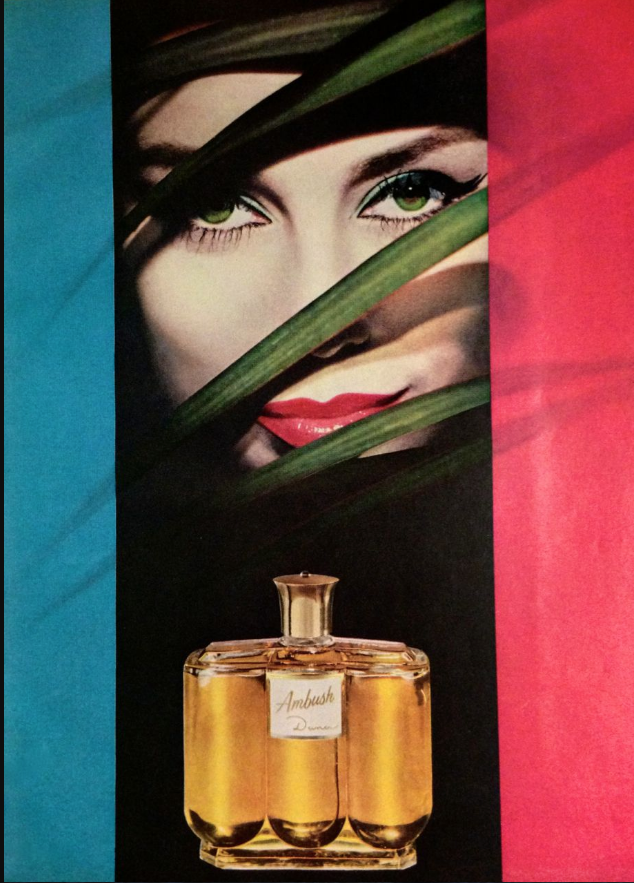
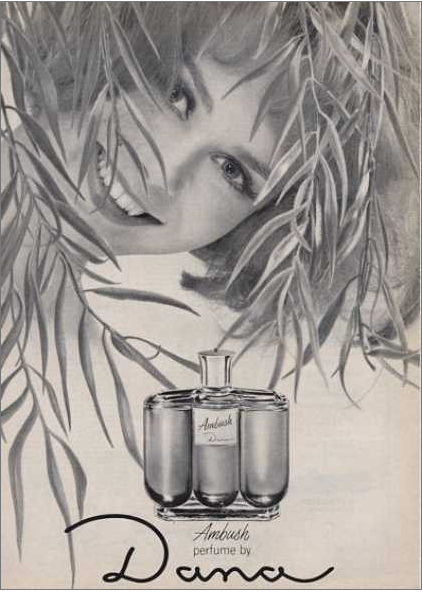
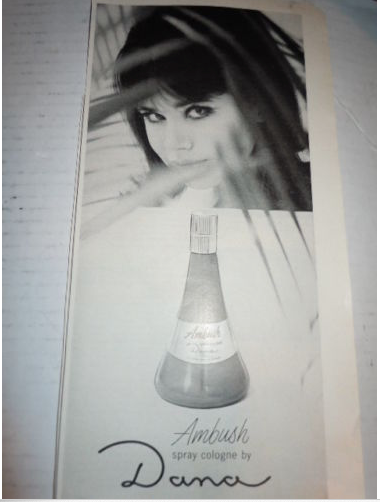
Apparently, women who wore this perfume were inclined to hide behind vegetation--then presumably leap out upon their prey.
History and description of perfume here.
Posted By: Paul - Tue May 22, 2018 -
Comments (3)
Category: Business, Advertising, 1950s, 1960s, Perfume and Cologne and Other Scents
Serb, the men’s cologne
In the midst of the Bosnian War, two Serbian designers came out with "Serb" the cologne. I can't think of any other cologne inspired by a war.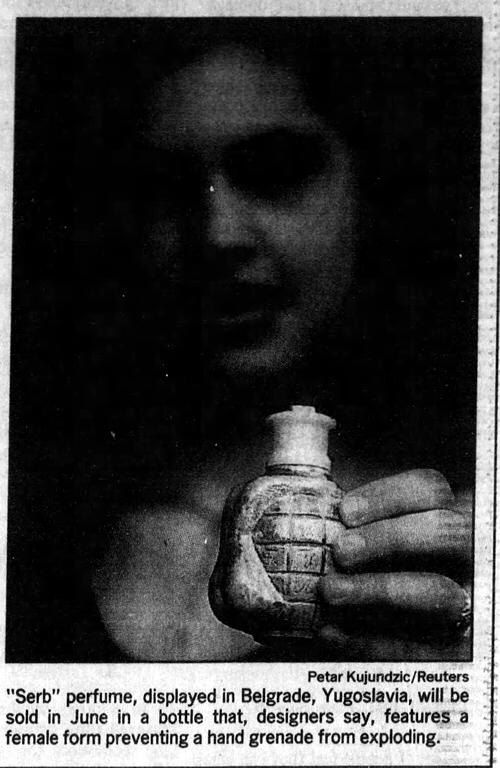
Arizona Republic - Apr 17, 1994
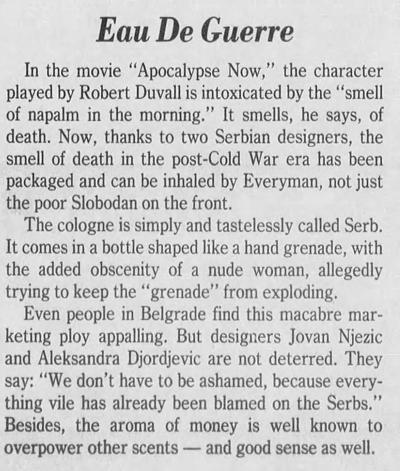
St. Louis Post-Dispatch - May 9, 1994
Posted By: Alex - Wed Mar 28, 2018 -
Comments (2)
Category: 1990s, Perfume and Cologne and Other Scents
Nuts & Bolts Toiletries
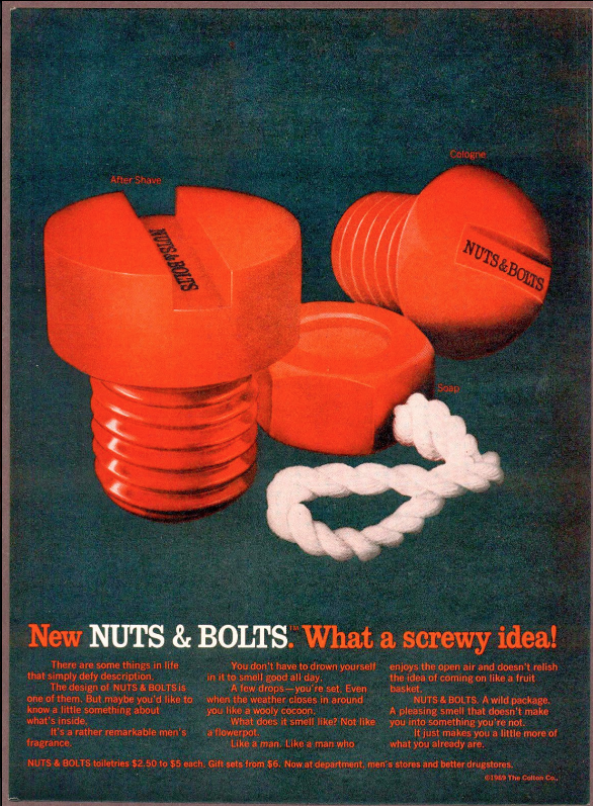
More info here.
Posted By: Paul - Tue Mar 06, 2018 -
Comments (1)
Category: Advertising, 1960s, Perfume and Cologne and Other Scents
Pullman Fragrance
For the man that wanted to smell like a train.Pullman puts you on the right track to an enlightening new experience in good grooming. Use it without reservation... Pullman's subtle scent underscores, never overpowers your masculine assurance. Board the Pullman train decisively with After Shave... Eau de Cologne... Talc... Deluxe bath soap... Shower soap on rope.
Someone has a bottle of this stuff for sale on eBay, if you wanna try some 50-year-old fragrance. Only $180!
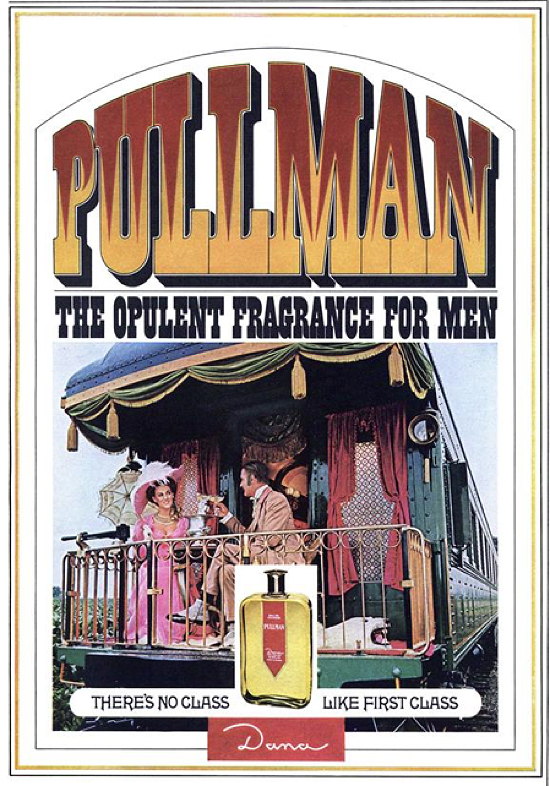
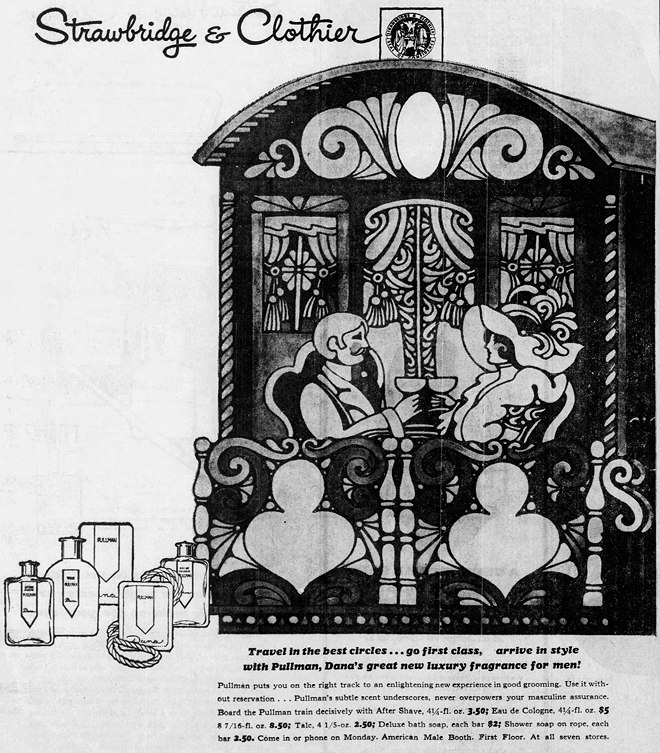
Philadelphia Inquirer - Oct 29, 1967
Posted By: Alex - Sun Feb 25, 2018 -
Comments (1)
Category: 1960s, Perfume and Cologne and Other Scents
Fragrance-coded card catalog
In 1974, the public library in Upper Arlington, Ohio added scratch-and-sniff scents to its card catalog. They called it the "Stick Your Nose in the Card Catalogue" program.The idea was that the card in the catalog would have a scent, and then the book on the shelf would have a matching scent. So you could find your books by smell. There were about 60 scents in total, including apple, chocolate, garlic, lemon, roses, root beer, leather, pizza, orange, strawberry, candles, pine, cheddar cheese, clover, and smoke.
I was curious what became of the scented catalog, so I emailed the library and asked. The reply came just a few minutes later:
And they also emailed me a news clipping about the catalog (in extended, below) from the local Upper Arlington paper.
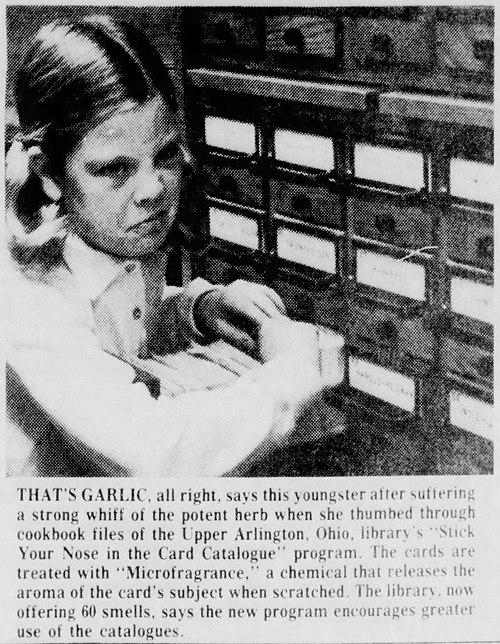
The Vernon Daily Record - Feb 9, 1975
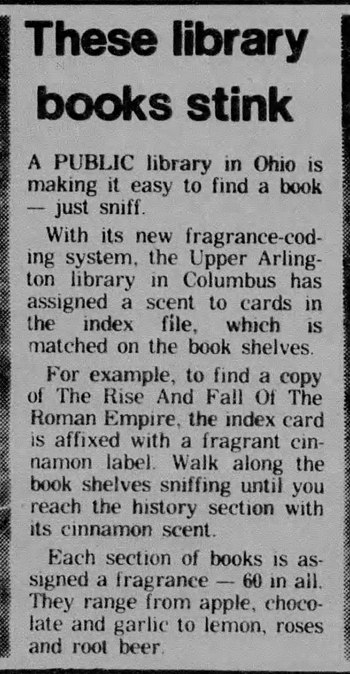
San Antonio Express - Apr 11, 1976
More in extended >>
Posted By: Alex - Tue Jan 16, 2018 -
Comments (9)
Category: Libraries, 1970s, Perfume and Cologne and Other Scents
Cigarette Perfume
From Etat Libre d'Orange. For women who actually want to smell like an ashtray.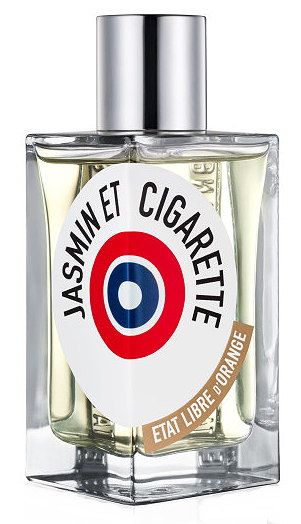
Posted By: Alex - Thu Dec 21, 2017 -
Comments (3)
Category: Perfume and Cologne and Other Scents
Lincoln-Scented Candle
When you want your room to smell like Abraham Lincoln.Other scents available include Theodore Roosevelt, Justin Trudeau, Ronald Reagan, Joe Biden, Vladimir Putin, and Rutherford B. Hayes.
Link: Amazon.com
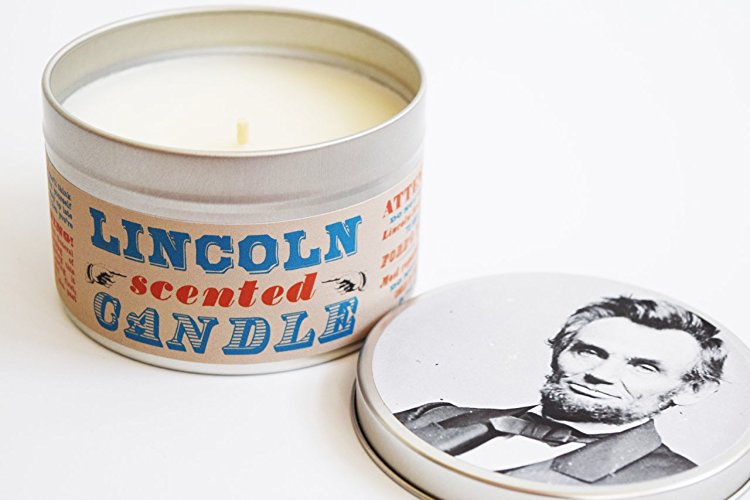
via Worst Things For Sale
Posted By: Alex - Thu Sep 28, 2017 -
Comments (7)
Category: Perfume and Cologne and Other Scents
Macho Cologne
Introduced by Faberge in 1976. It was described as being "packaged with a startlingly new futuristic look." Which is to say that it was packaged as a giant phallus.I like the ad promoting it as a Father's Day gift. I can just imagine a son or daughter giving this as a present to their dad.
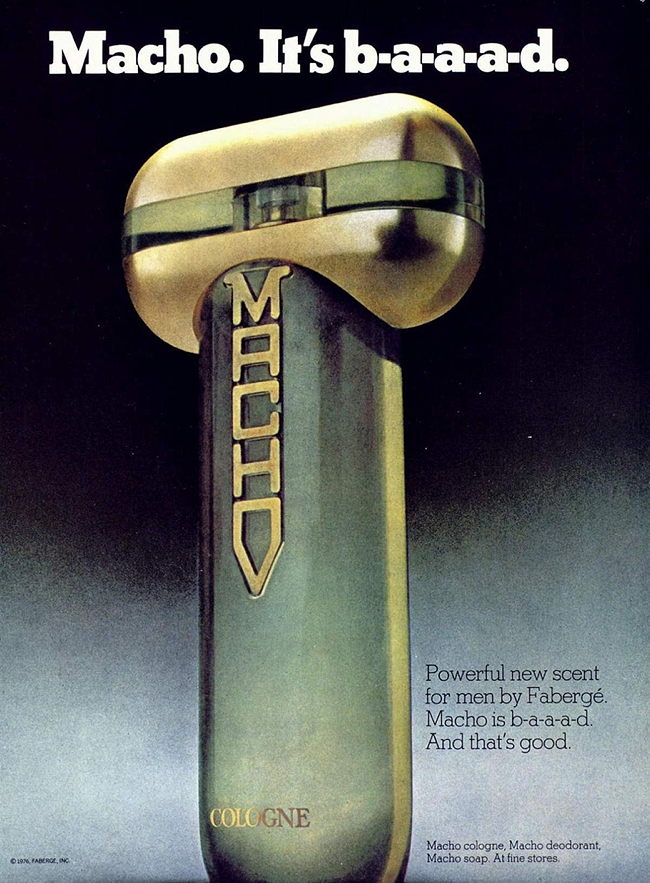

Indianapolis Star - Oct 30, 1976
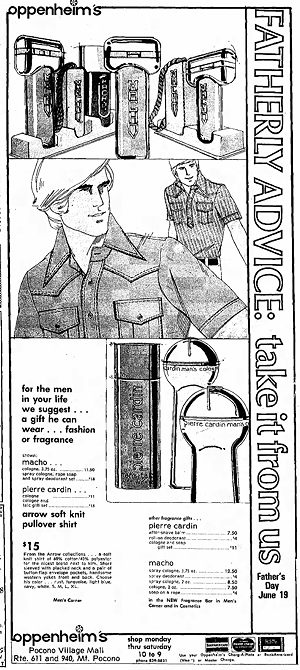
The Pocono Record - June 17, 1977
The marketing of the cologne must have gained some notoriety. I found a brief discussion of it in an academic study of marketing — Marketing and Semiotics: New Directions in the Study of Signs for Sale (1987):
Update: Thanks to Brian for drawing our attention to Pierre Cardin Man's cologne, which also featured a suggestively shaped bottle.
And I just noticed that the Father's Day ad features both Macho cologne and Pierre Cardin Man's cologne. So if you gave your dad both, what message would you be sending him?
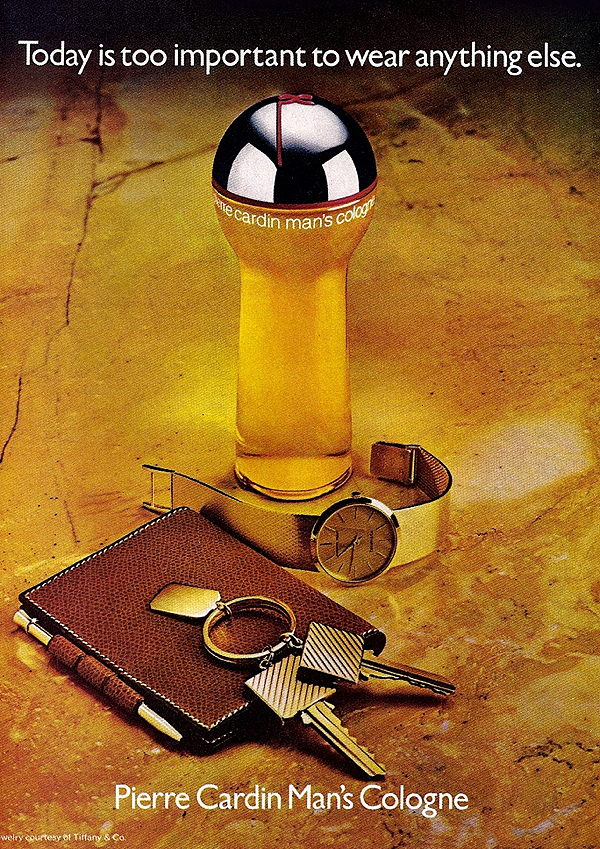
Posted By: Alex - Wed Apr 26, 2017 -
Comments (8)
Category: Advertising, 1970s, Perfume and Cologne and Other Scents

| Who We Are |
|---|
| Alex Boese Alex is the creator and curator of the Museum of Hoaxes. He's also the author of various weird, non-fiction, science-themed books such as Elephants on Acid and Psychedelic Apes. Paul Di Filippo Paul has been paid to put weird ideas into fictional form for over thirty years, in his career as a noted science fiction writer. He has recently begun blogging on many curious topics with three fellow writers at The Inferior 4+1. Contact Us |




